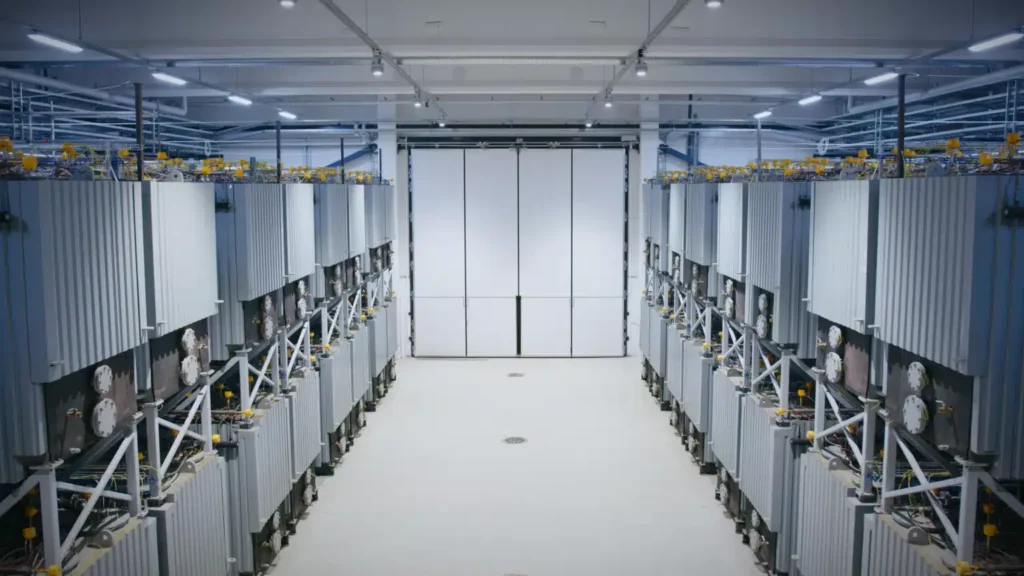The methanation plant in Harjavalta has officially commenced eMethane production, marking Finland’s first industrial-scale step into synthetic methane. This milestone arrives as European nations recalibrate their energy strategies around security, decentralization, and decarbonization — and it places Finland at a potential inflection point in the evolving hydrogen value chain.
From Green Hydrogen to Grid-Ready Fuel: The Role of eMethane
At the core of the Harjavalta project is the synthesis of methane from green hydrogen and carbon dioxide using microbial methanation, a process led by Q Power in collaboration with P2X Solutions. This approach is gaining traction as a solution for energy storage and grid compatibility. Unlike hydrogen, which requires costly infrastructure adaptation, methane can utilize existing gas pipelines and storage networks. With methane’s energy density at approximately 55.5 MJ/kg — nearly triple that of hydrogen — the conversion provides logistical and economic advantages in scenarios requiring long-distance transport or seasonal storage.
Still, methanation is not without its challenges. The process itself is energy-intensive, and carbon dioxide sourcing must be aligned with carbon neutrality goals. Q Power’s system reportedly uses biological methanation, which operates at lower temperatures than catalytic alternatives, potentially reducing energy input and increasing system efficiency. However, full life-cycle assessments and techno-economic data remain limited in public disclosures, raising questions about scalability and cost-competitiveness versus other hydrogen derivatives like ammonia or methanol.
Why This Matters: A Convergence of Climate Policy and Energy Security
The significance of Harjavalta’s commissioning transcends technological achievement. It aligns with a broader European urgency to diversify energy sources and reduce dependency on imported fossil fuels — an urgency magnified by recent geopolitical disruptions and the European Commission’s REPowerEU plan.
Finland, with its robust renewable electricity grid (approx. 90% low-carbon, per IEA 2023), has a comparative advantage in producing green hydrogen domestically. The Harjavalta site leverages this by converting surplus renewable electricity into storable, dispatchable gas — enabling a buffer against both seasonal variability and external shocks.
But synthetic methane’s strategic value hinges on more than storage. Its compatibility with existing LNG infrastructure could allow Europe to partially repurpose terminals and transport routes initially designed for fossil fuels. This could accelerate the integration of green gases into heavy industry and transport — sectors that face slower electrification pathways.
The Risk: Technological Promise Without Market Pull
Despite technical readiness, market deployment of eMethane remains heavily dependent on supportive regulation, CO₂ pricing, and offtake agreements. The absence of a robust carbon pricing mechanism or green gas quotas could stall projects like Harjavalta from achieving economic viability at scale.
Moreover, the relative energy efficiency of eMethane (after accounting for electrolysis, methanation, and compression) is significantly lower than direct electrification, raising concerns about resource allocation. For comparison, power-to-gas-to-power systems operate at 30–40% round-trip efficiency, whereas battery storage exceeds 85%. Thus, use-case prioritization is essential — eMethane may be best suited where electrification is impractical, such as maritime transport or high-temperature industrial processes.
Finland’s Positioning in a Fragmented Market
With this project, Finland enters a nascent but rapidly evolving synthetic fuels market. As of 2024, fewer than a dozen commercial-scale eMethane projects are operational worldwide, concentrated primarily in Germany, Japan, and the United States. Finland’s move signals an intent not just to participate, but to lead in a niche with both decarbonization and geopolitical relevance.
However, leadership will require more than pilot projects. Transparent reporting on production costs, system efficiency, and emissions footprint will be crucial for stakeholder confidence. Furthermore, cross-border policy coordination — including guarantees of origin, hydrogen import/export standards, and harmonized carbon pricing — will be necessary for Finnish eMethane to compete and integrate across European markets.
From Milestone to Market Shift
The launch of eMethane production in Harjavalta illustrates a growing maturity in Finland’s hydrogen sector, transitioning from feasibility studies to functioning infrastructure. Yet it also highlights the complexities of scaling power-to-gas technologies in a policy and market landscape still in flux.
If optimized and expanded with clear economic and regulatory frameworks, synthetic methane could serve as both a climate mitigation tool and a cornerstone of a more resilient, decentralized European energy system. Without those supports, however, Harjavalta risks remaining a symbolic achievement rather than a replicable model.
